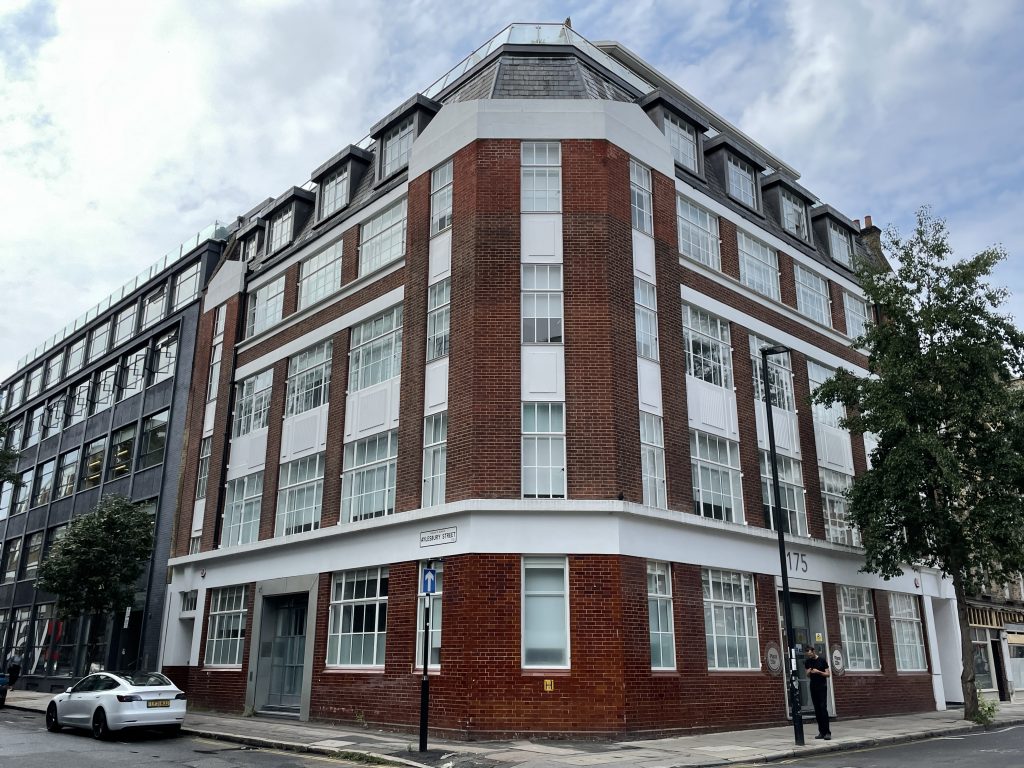Aylesbury Street was part of the Seckford estate. Thomas Seckford, or Sekforde, who left part of his Clerkenwell estate to endow alms-houses in Woodbridge in Suffolk. (The Seckford Charity, now the Seckford Foundation, continued as landlord until the 1970s when it sold most of its land to the London Borough of Islington.)
Aylesbury Street in the 19th century was lined with shops. But none of the old houses on the north side survived, and only two on the south side. Today, Aylesbury Street is lined by large commercial blocks. The first is the headquarters of Alexander McQueen.

The next building is Nos 8 – 15 Aylesbury Street, but the main entrances for the businesses inside it are in Jerusalem Passage or St John’s Square.
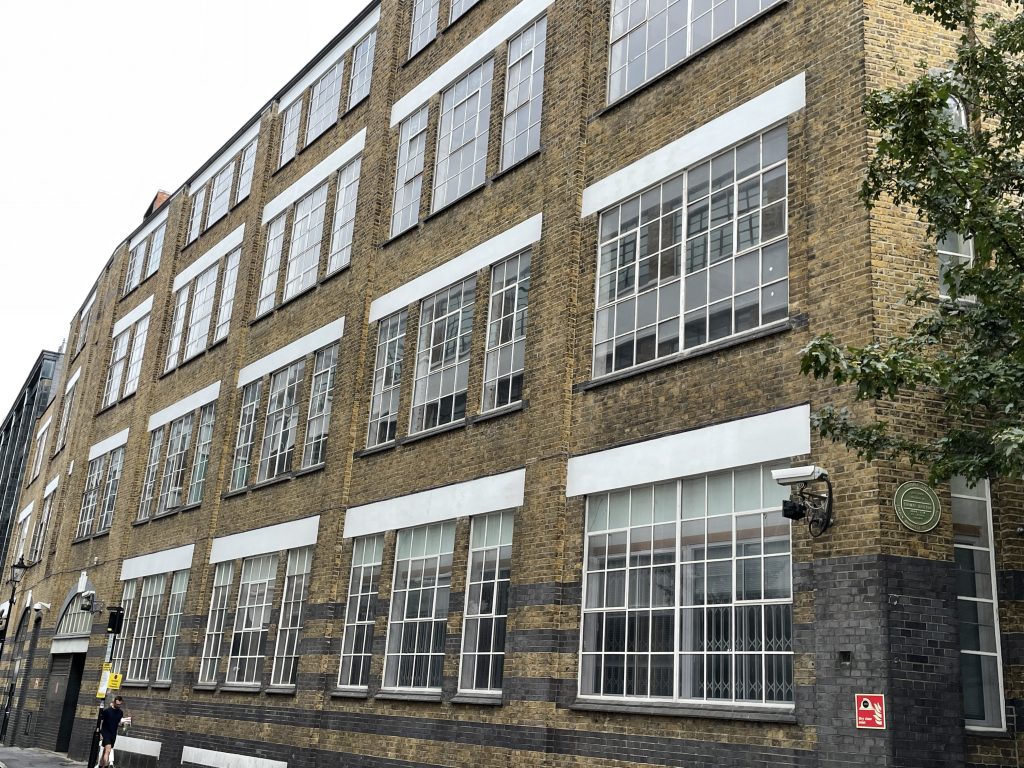
These two houses – Nos. 17A and 17B Aylesbury Street – are survivors from the 19th century.
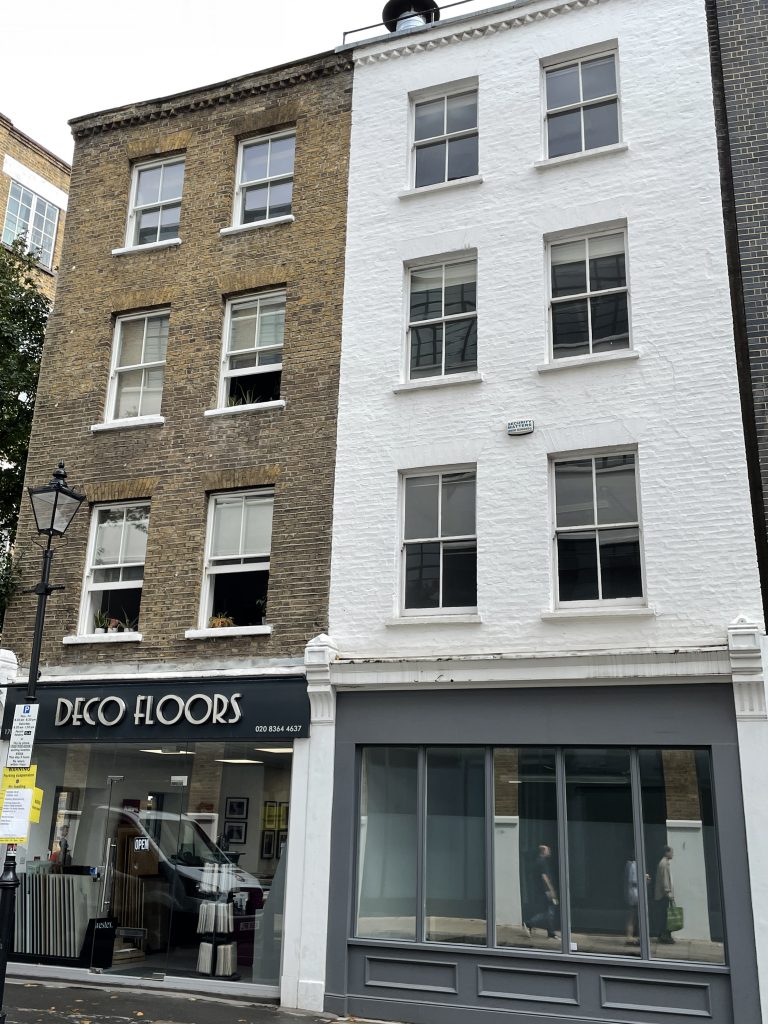
Aylesbury House, Nos. 17 – 18 Aylesbury Street, is a post-War office block.

On the north side, most of the street is the side of No. 49 St John Square
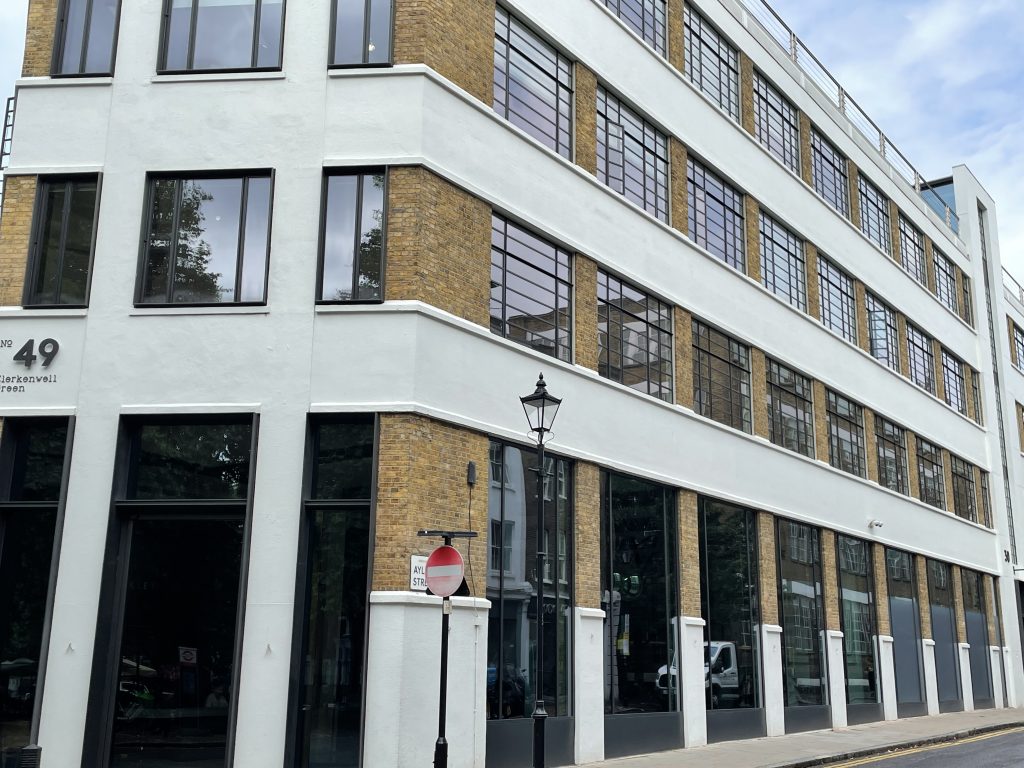
The building then becomes No. 30 Aylesbury Street as far as Woodbridge Street. No. 30 was originally called Woodbridge House. The Seckford Charity which owned the land built it in 1936–9 as factory units. The architects were Fuller, Hall & Foulsham. (The building was revamped as offices in 1990.)
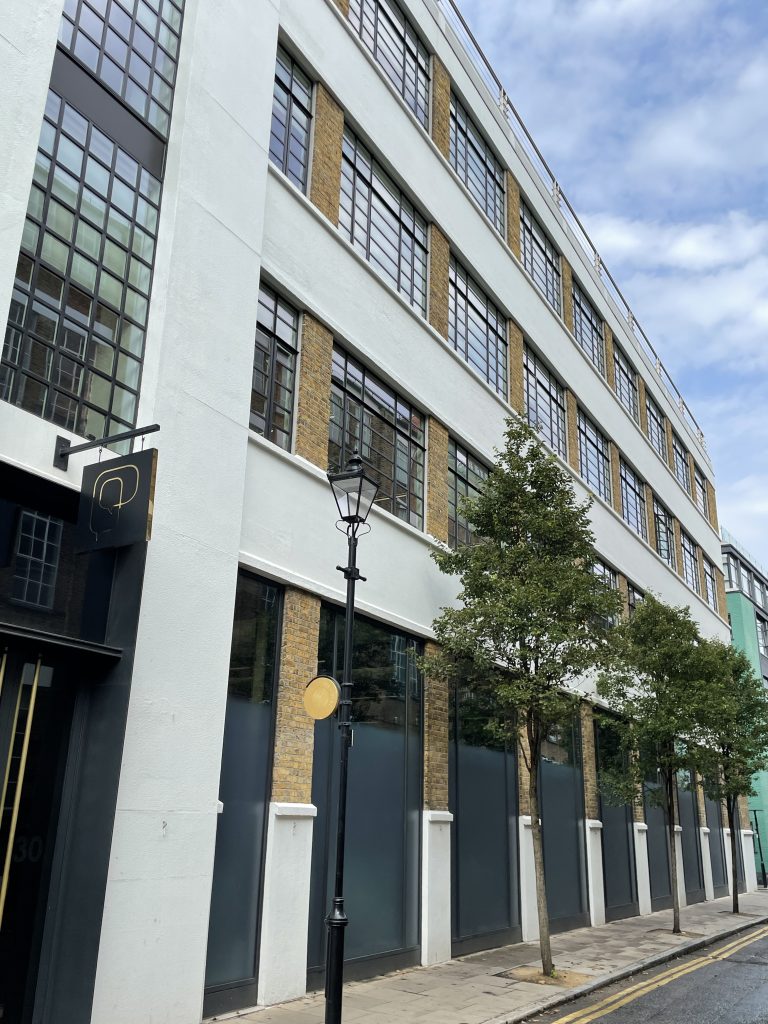
This is what the interior looked like when it was a factory.

The Print House, No. 32 Aylesbury Street, was built nearly 30 years later (1963) to designs by the same firm of architects who designed No. 30 – Fuller, Hall & Foulsham. The reinforced-concrete frame is filled with brick and aggregate panels.

The corner property is the side of Argus House in St John Street
